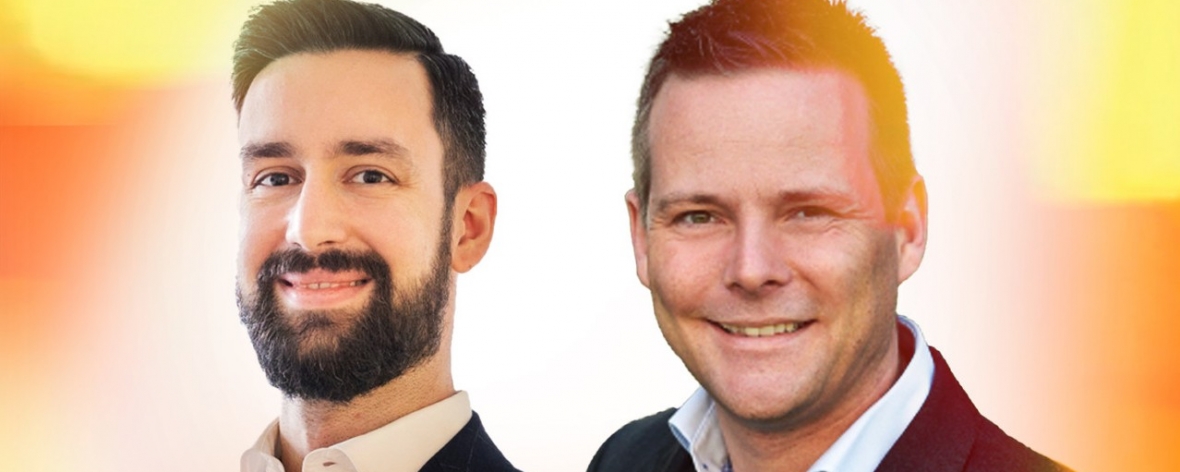News
Embracing the cloud, delivering on a cloud first strategy
Such is the case of the leader in global content connectivity solutions SES, who is migrating its various activities and operations to the cloud, as part of making it easier and faster to work with their customers. Being a cloud-native leader in the satellite operator and cloud service provider markets, SES embraces cloud in a truly holistic way. Fujitsu Luxembourg is the trusted partner to accompany them in this journey and support the company’s migration to the cloud.
Migration to the cloud consists of three major pillars: business, people and technology. On the business side, a migration project needs to generate value for the company. It is also about defining why the company should migrate to the cloud and what needs to be achieved. It is equally important to understand the impact on the staff, and which skills they will need in the future, as well as the impact on the current IT operating model. Finally, technology aspect includes the choice of the platform and the right products.
“We started migrating operations to the cloud a year ago,” says Stefan Okhuijzen, Senior Vice President, Information Systems & Services Design and Implementation at SES. “For SES to be successful in accelerating our own customers’ cloud journey we need to be a leader in embracing the cloud ourselves and optimize ourselves as a business. Traditional hardware-based applications are slow to change, while in the cloud, many applications are software-defined and quick to deploy,” Stefan Okhuijzen continues.
Introducing the Azure Migrate Program
The name of the migration project at SES is called the “Azure Migrate Program” (“AMP”), reflecting the choice of the platform, Microsoft Azure, and acceleration track (“AMP”) from Microsoft.
The program is driven by a cross-disciplinary team from Fujitsu and SES with the goal to migrate a big portion of today’s on-premise workloads to the cloud.
“The Azure Migrate Program is one of the largest projects that we are working on as part of our cloud-first philosophy. This program will allow us to optimize costs and simplify our operations whilst amplifying innovation,” Stefan Okhuijzen explains. “Our standards, as well as security requirements, are very high, as SES is serving customers in all parts of the globe, 24/7. We found a reliable partner in Fujitsu, who helps ensure that our migration to the cloud runs smoothly.”
Daniel Sahler, Head of Multi-Cloud Services at Fujitsu Luxembourg, adds, “Until today, we have already successfully migrated to Microsoft Azure dozens of workloads which were initially hosted on hundreds of virtual machines, running in multiple on-premise data centers spread around the globe. Now, we are set to further scale the migration.”
To keep track of multiple tasks that are driven in parallel, several experienced Cloud Architects/Engineers from Fujitsu are working together with the Architects, Engineers, Developers and Managers from SES. Jointly, they are carrying out assessments and design discussions, managing the migration, creating the documentation and handing over the migrated workloads to the IT Operations team. Two project managers, one on each side, are working together with SES’s Tech Lead, to ensure that all parties are well aligned in what they are doing.
AMP – Acceleration through industrialization
Working in an agile and collaborative way is one of the ground rules for achieving successful and timely migration to the cloud. In the beginning of the project, considerable time has been spent to assess what works and where improvements could be made, based on the insights and knowledge sharing.
“Creating improved visibility on the migration pipeline, clear migration priorities and the industrialization of the ‘migration engine’ ultimately led to a strong increase in our migration pace, which started with lower double-digit number of virtual machines by month to triple-digit number of virtual machines migrated per month,” Stefan Okhuijzen recalled.
Daniel Sahler adds, “In the early stages of the project, we quickly identified the importance of a strong governance model. One of the first steps was to properly understand the IT operating model and integrate key stakeholders from the necessary departments into the core team. Because driving a successful cloud migration project requires strong involvement from all key stakeholders.”
Due to the well-defined processes, the team is even doubling the initial target of virtual machines to be moved to the cloud for the end of this year, and are on track to achieve this.
AMP – Key Learnings and success factors
Moving to the cloud is as much about changing technology as it is about changing the way of working. SES, with its innovative and cloud-first mindset, was fully ready for this step, supporting the migration to the cloud throughout all relevant functions within the company.
In parallel to the Azure Migrate Program, SES has been focusing on awareness and skilling up their own internal teams. A great example of supporting this momentum within the company was the SES Cloud Day – a day filled with content from both internal and external speakers to explain why Cloud is necessary and how to develop relevant knowledge and skills.
“Through an extensive training offering, many SESers got trained and obtained their cloud certification over the last year,” Stefan Okhuijzen says.
Fujitsu also played an important part in the upskilling activities by conducting tailor-made workshops on specific cloud-related topics to focused audiences.
“What SES does in space is extraordinary, and the impact they are making to millions of people and businesses on earth is absolutely fascinating,” Daniel Sahler adds. “We are extremely proud to be able to support SES in their migration to the cloud, and be part of this success story!”
Find the article published on Paperjam by clicking here.
